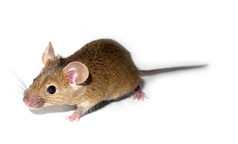New roles for huntingtin: removing a healthy protein to understand its function
Removing normal huntingtin in adults may disrupt healthy brain function, a recent study suggests.
By Dr Leora Fox September 22, 2017 Edited by Dr Jeff Carroll
Some techniques aimed at lowering mutant huntingtin can also affect the normal form of the protein. With clinical trials underway, it’s all the more important to understand the role of normal huntingtin in the adult brain. Researchers recently inactivated the huntingtin gene in healthy adult mice of different ages. They found that this could cause neurological and behavioral problems, suggesting that we need to be cautious with drugs that lower normal huntingtin.
Understanding huntingtin function
The mutation that causes Huntington’s Disease alters instructions for building a protein called huntingtin. In HD, a repeated sequence of letters in this gene leads to an extra-long form of huntingtin protein that can wreak havoc in brain cells over long periods of time. One of the most exciting avenues of HD research is huntingtin lowering (also known as gene silencing), which aims to reduce levels of the huntingtin protein in cells.

Animal studies have revealed strong benefits of these techniques, showing that reducing mutant huntingtin in the brains of HD mice can improve their brain health and behavior. Rigorous experiments in animals have given way to clinical trials of drugs that target the HD gene in people, and there are more techniques for decreasing or eliminating huntingtin on the horizon. Some of these approaches to attack mutant huntingtin also reduce levels of the normal protein, including the Ionis huntingtin-lowering drug.
For this reason, we need to understand more about what happens to the brain when huntingtin is removed. To do this, a group of researchers recently used genetic techniques to remove huntingtin from healthy adult mice of different ages, then studied their brains and behavior until old age.
Huntingtin during development and adulthood
When researchers want to understand the function of a gene, their first move is usually to get rid of it. By studying what goes wrong when a protein is missing, we get clues about its role in cells. If you didn’t know the purpose of a belt, and then you removed your belt and found your jeans around your ankles, you’d likely realize what a belt was for.
“We need to understand more about what happens to the brain when huntingtin is removed ”
In mice, when huntingtin is missing from the brain at conception, this causes early and severe neurological problems. When huntingtin is missing from the entire body and brain, the mice will die before birth. This led scientists to deduce that normal huntingtin is very important during development, especially in the brain.
However, there is far less known about the role of normal huntingtin in adulthood. Mutant huntingtin, although altered, is still present, and most people with HD have normal huntingtin, too. What if huntingtin is around for half a lifetime, and then is suddenly reduced or eliminated? That’s what’s happens with a huntingtin-lowering treatment trial, where the participants are adults with HD symptoms. So far, there are promising reports on the short-term safety of reducing huntingtin levels in adult humans. But continued animal studies can help to inform ongoing trials.
What happens when huntingtin is gone?
To study what happens when huntingtin is removed during adulthood, a team of researchers led by Ioannis Dragatsis at the University of Tennessee used a genetic tool to precisely time the removal of huntingtin in a large proportion of cells all over the body. This is a technique involving specially modified mice that are given a chemical injection to trigger the removal of a chosen gene. It’s useful to help researchers understand the function of a gene at a specific time of life, but this particular technique is not being developed as a treatment for any human disease.

The Dragatsis team used this method to try and understand huntingtin’s function during adulthood. They inactivated the huntingtin gene at three different adult ages: 3, 6, and 9 months old. For context in mouse-years, 3 months is sort of like an older teen, and 9 months is about middle-aged. They examined the natural lifespan of these mice and closely studied their brains and behavior over time.
Completely removing normal huntingtin caused the mice to have a shorter lifespan, neurological problems, and trouble with movement tasks. The earlier the gene was inactivated, the more severe the behavioral issues, suggesting that huntingtin is most important in younger adults. Removing huntingtin caused the mice to have slightly smaller brains and overall signs of inflammation. Despite behavioral and neurological concerns, brain areas normally affected by HD, the striatum and cortex, did not contain damaged nerve cells. This is encouraging given that these areas are the main focus for huntingtin lowering drugs in clinical trials.
A new role for huntingtin – and conflicting results
It’s difficult to determine the exact cause of the neurological problems that arose when huntingtin was removed in mice, but the researchers uncovered some interesting clues. They found that brain cells in an area called the thalamus had problems processing and using iron, leading to the buildup of iron and calcium inside cells. The thalamus is a main relay station for the brain, often an important middleman in transmitting messages from one area to another. Iron is a mineral that’s essential in the brain for generating energy and ensuring the smooth transmission of nerve impulses. It’s not clear exactly how huntingtin helps with the efficient use of iron in the thalamus. However, the neurological problems caused by disrupting this pathway have alerted us to a potentially significant role for huntingtin in the aging brain.
“We will need to continue to use caution when removing or lowering normal huntingtin in human studies ”
Another recent study from Xiao-Jiang Li’s laboratory at Emory University used a similar (but not exactly the same) technique to remove huntingtin in mice at 2, 4, and 8 months of age. This was dangerous in the youngest mice, leading to early death due to failure of a digestive organ called the pancreas. However, removing huntingtin in mice older than 4 months appeared to cause no neurological problems, a stark contrast to the Dragatsis lab’s work. Such conflicting reports can be confusing, but it’s ultimately informative to examine the differences between parallel studies. The slight discrepancies that lead to differing results allow us to gather more information about the underlying biology.
The message
Importantly, both studies suggest that we need to use caution when removing or lowering normal huntingtin in human studies. Another option may be the pursuit of “allele-specific” therapies, those that specifically target mutant huntingtin while leaving the normal form intact. This approach is being used by WAVE Life Sciences, a company working on developing allele-specific huntingtin lowering drugs for HD.
However, it’s essential to recognize that the experimental technique used in these mice, permanently removing huntingtin all over the body and brain, is very different from the clinical approach of temporarily lowering huntingtin in selected parts of the brain. In the huntingtin-lowering trial that is currently underway, the treatment is reversible, and participants are being carefully monitored for safety. Irreversible forms of HD gene editing, like CRISPR-Cas9, will require meticulous long-term testing before they can be brought to the clinic.
As the short-term administration periods for the huntingtin-lowering drug are extended, clinicians will continue to be watchful and to collect data that is essential to determine whether the treatment is safe and effective. In the meantime, a variety of approaches in animals can deepen our understanding of the biology behind the drugs that are already in the clinic.


